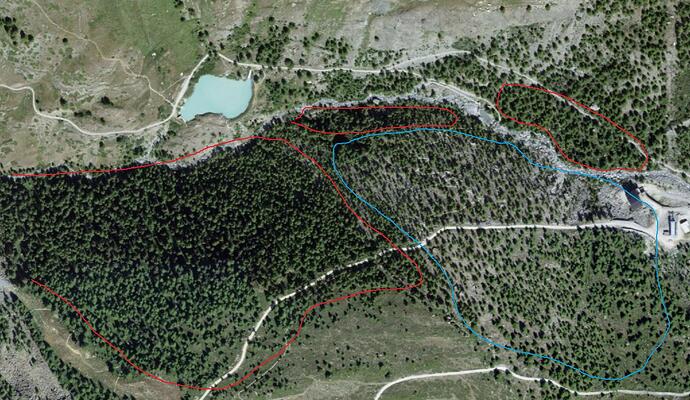A useful picture. It’s a bit more difficult to decide for the borders of these areas on an airfoto, but that’s something we would have to live with. It is still better, than when it’s not existing, though. But I see the implementation seems to be quite variable in ideas.
An example image of flyover photography in Switzerland:
The Red line surrounds dense(r), normal forest (I was a bit sluggish … the “south” has a bit of light forest included). The blue line surrounds a light(er) forest. Way to many trees to mark individually, but very clearly spaced much more with an alpinegrassland substrate they stand on. This spearation can be done fairly clearly … which I find such a tag or subtag (and also distinct rendering/border in ID editor etc) very useful.
